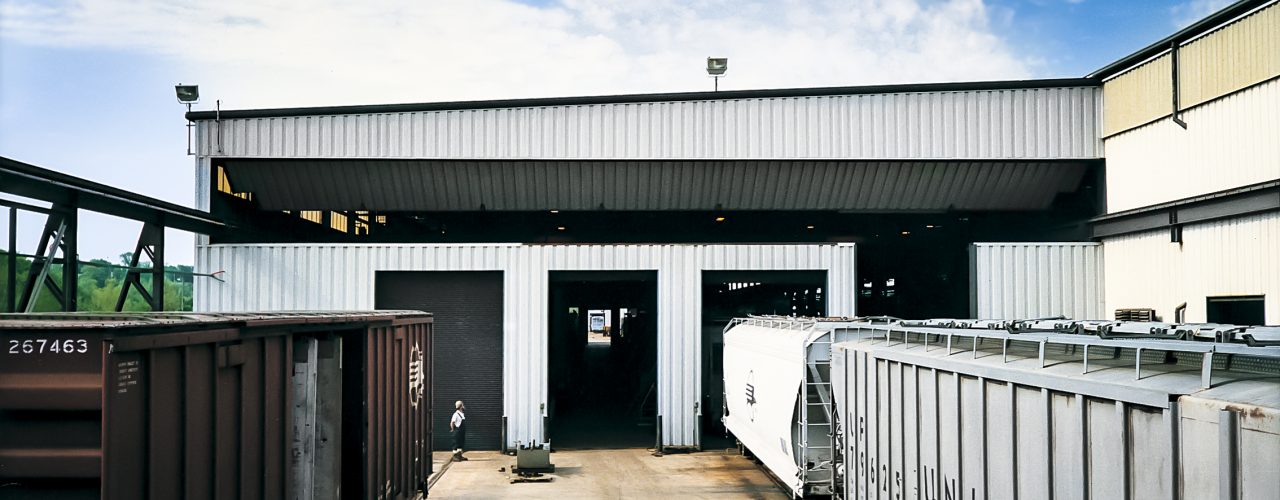Craneway & Monorail Doors
For new or existing buildings, a Craneway door installation demands expert coordination of architectural and structural design with door requirements. Fleming’s experienced, professional engineers will carefully study your specific needs, recommend the proper Craneway door and provide design data, specifications and clearance dimensions to integrate the door with your building.
Most commonly used types of Craneway doors are In-swing, Out-swing or Vertical Lift. In-swing Craneway doors are hinged at the header and the door swings up and into the building. The Out-swing is hinged at the soffit line and the door swings up and out forming a full canopy outside the opening. The Vertical Lift door rises vertically along the inside or outside face of the wall.
The building design and clearances determine the most suitable Fleming Craneway door. All are motorized for operation at speeds ranging from 30′ to 60′ per minute and can be manually operated, if required, by the auxiliary operating system.
To provide ground level access for materials, trucks and rail cars – and passage of crane loads – Fleming load doors are motorized slide or swing leaves in conjunction with crane leaves. The combination of leaves have electrical and mechanical interlocks to properly sequence operation and to eliminate possibility of damage to doors, equipment, payload, building, and vehicles.
Monorail Doors
Monorail Doors are typically either slide or swinging. The monorail crane beam is allowed to pass (unbroken) through the plane of the doors. These doors are usually smaller in scale to Craneway doors, but allow crane loads to pass from area to area unhindered while weathering and securely closing off the opening.


